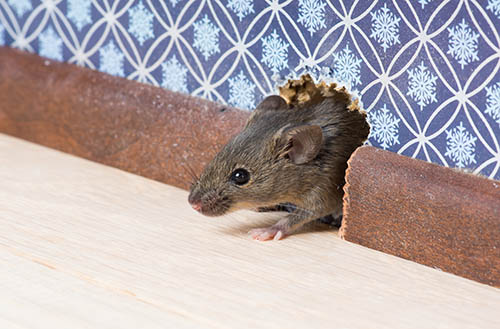 There are things that everyone shares: the need for food, the search for love, and the intrusion of mice into our homes. But don’t despair! There are several ways to deter and remove mice. Read on to learn about a few of the more well known, if a little out-there, methods.
There are things that everyone shares: the need for food, the search for love, and the intrusion of mice into our homes. But don’t despair! There are several ways to deter and remove mice. Read on to learn about a few of the more well known, if a little out-there, methods.
Peppermint Oil And Cotton Balls
The smell of peppermint is lovely for humans, but terrible to a mouse’s nose. Put a few drops of pure peppermint oil on cotton balls and place them where you’ve noticed evidence of mice. Be careful to change those balls for fresh ones at least once a week once the smell wears off, cotton balls are great material for a mouse nest.
Dryer Sheets
Another strong smell that will discourage mice from your home is dryer sheets. Place fresh ones around mouse hangout points, or stuff them into entry holes. Same thing here, though: make sure to remove them once the smell wears off. Nothing looks nicer for a nest than an unscented dryer sheet.
Mousetrap! The Glass Bowl Version
One humane and cost-effective choice is to build a live trap by balancing a glass bowl on an upright coin. Put some chocolate or peanut butter high up inside the bowl. When the mouse reaches for the treat it’ll upset the coin and drop the bowl to the floor, trapping itself. Then slide stiff cardboard over the bowl opening and carry the mouse at least 1km from your home before releasing it. Or you can go the store-bought route but either way, check all traps at least once a day.
Plug Those Holes!
With the mouse gone, there’s two things left to do. First, clean up after it (remove its droppings and sanitize the area) to discourage a return. Then close all its doors. Block any holes bigger than a pencil with caulking, steel or copper wool, or even aluminum foil all of these are tough to chew through.
And that’s it! Keep an eye out, and call in help if it becomes too much to handle these steps are most effective for a small number of rodents.;
